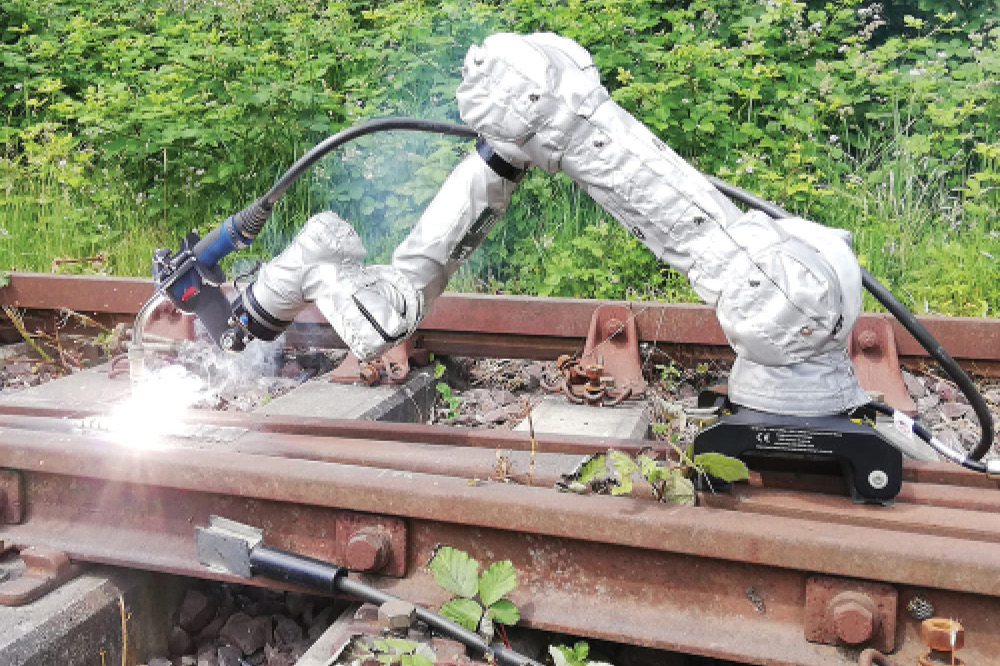
Many rail company revenues were hard hit during the COVID-19 lockdown and today face increasing pressure on the maintenance, efficiencies and on the network expansion front. Add to this the goal of reduced global emissions of carbon dioxide by 2030, and that means less freight by road and more emphasis and pressure on rail networks, said Welding Alloys Railways Services Expert Jamie Fata.
“This will come as no surprise to the railways industries worldwide but laying new track means a lot of welding while existing track, crossings, and heads, also need hardfacing maintenance against excessive wear,” added Fata. “Capital investment and increased maintenance costs will play a large part in the decision processes of these rail companies in the coming years. Utilizing the right hardfacing welding technology will be key.”
And an added headache for the railways is the welding trade is suffering from a lack of career uptake. Welding is no longer appealing to young people despite being a sought-after skill. This developing skills shortage is most likely due to negative perceptions of the profession including the health effects on the welder – toxic fumes, stressful welding positions, and the like, warned Group Business Development Director for Consumables Bastien Gerard.
Faced with this, Welding Alloys developed an innovative solution making it possible to attract and retain welders and keep in-house welding skills by reducing their exposure to toxic fumes and physical stress. The solution is Flex e.bot, a collaborative robot (Cobot) solution allowing hardfacing welding in direct collaboration with the welder.
“The Flex e.bot offers real positional comfort to the welder, peace of mind by keeping them away from welding fumes while freeing them from binding tasks and allowing welders to focus on more valuable activities,” said Welding Alloys Bastien Gerard. “Safety and time are paramount in all rail operations and the replacement of tracks and crossings is costly and time consuming. The Cobot solution meets the need to balance retaining skills to extend the life of networks set against efficiencies and costs.”
Flex e.bot is a real evolution in the repair and maintenance of urban area rail networks, which puts people and their knowledge at the heart of industrialization, confirmed Gerard.
Flex e.bot has been specially developed to carry out weld surfacing jobs. Hardfacing operations by arc welding are essential and offer a true solution for restoring and extending the life of rail networks. The Flex e.bot has a lightweight design and is compact, meaning it can easily be deployed on site. Two adapters have been developed to place the Cobot as close as possible to the area to hardface:
- For rails above ground, a mechanical clamp will take the shape of the rail. The Cobot will then attach itself on this support via a base connector.
- On a truck, a magnetic support can be fitted to transform it into a mobile welding station.
In order to retain flexibility, the welder can regain control at any time by disconnecting the welding torch of the Cobot to perform manual operations (pointing, retouching, finishing, etc.).
“We understand transportation is the backbone of many countries and is based on the ability to maintain and operate an efficient and economically viable railway system,” explained Fata. “The question for railway networks now is how to meet expectations in construction and maintenance and reduce costs? The answer is easy-use integrated technology like the Flex e.bot. With this Cobot solution it is no longer about complicated machine programming, instead it just takes a few clicks to define the area to be hardfaced and the welding technique, direction and inclination. Saves time and time is money.”
Welding Alloys, www.welding-alloys.com
